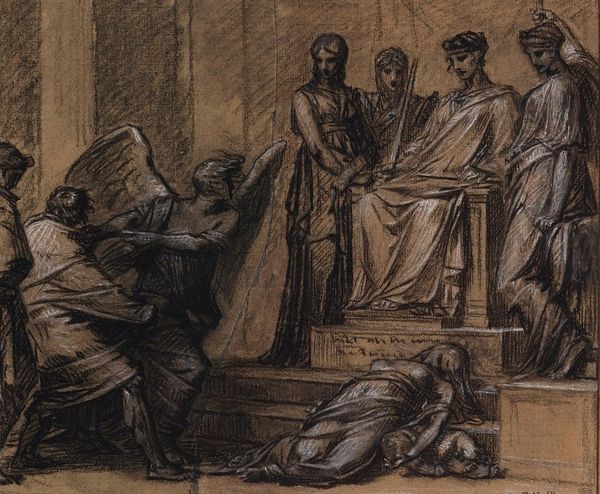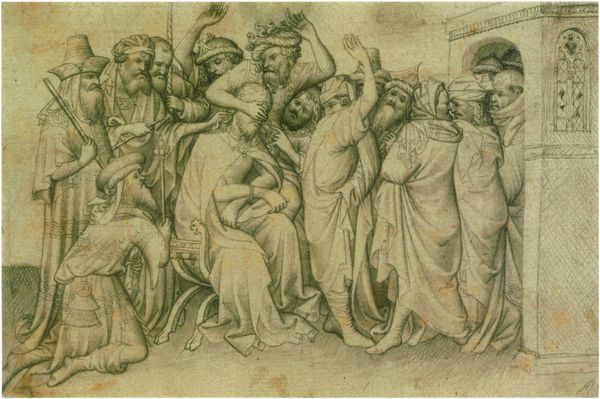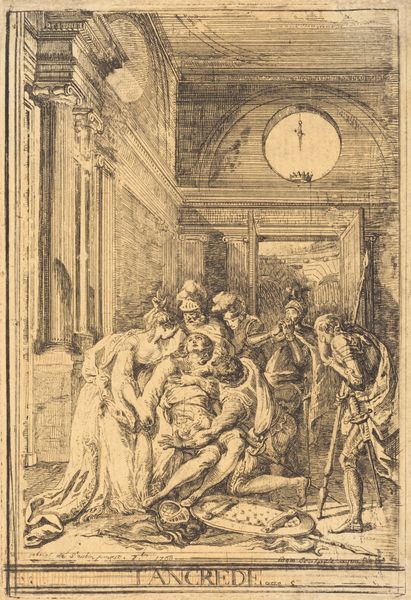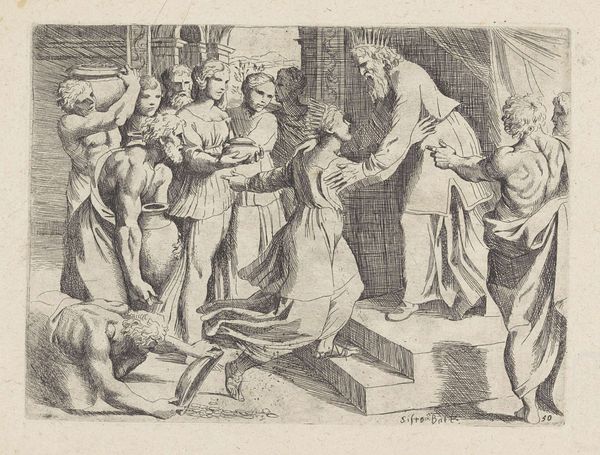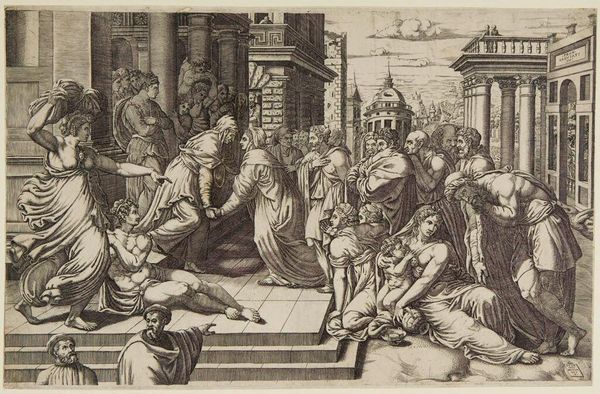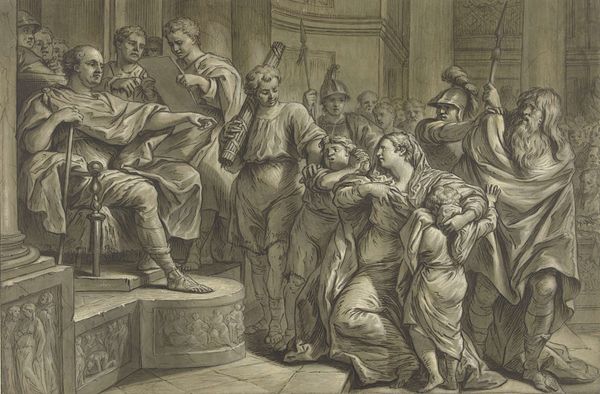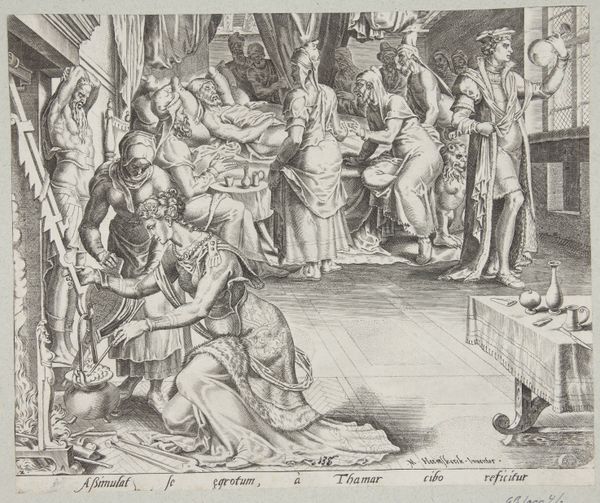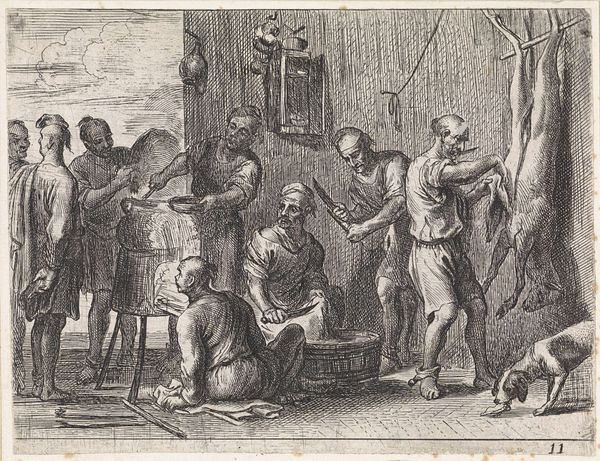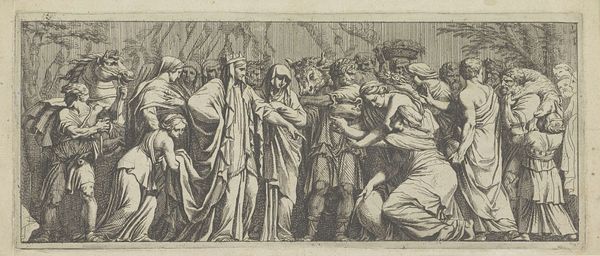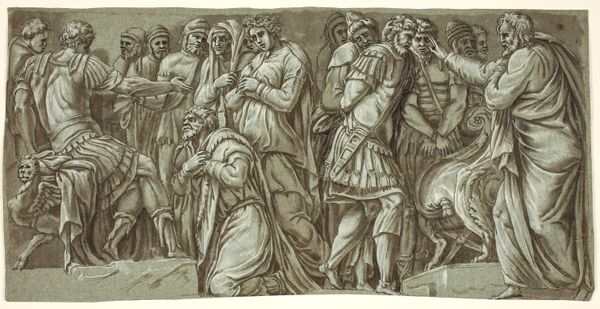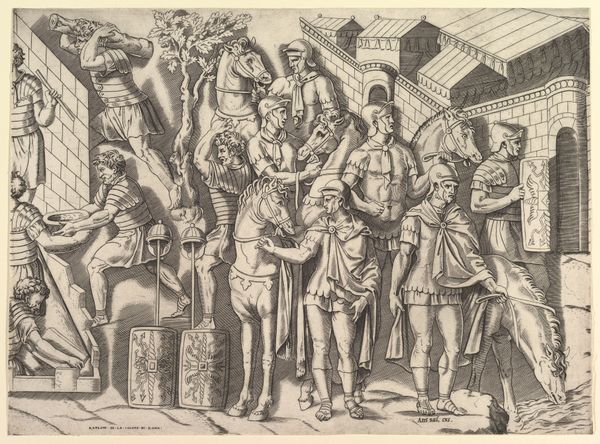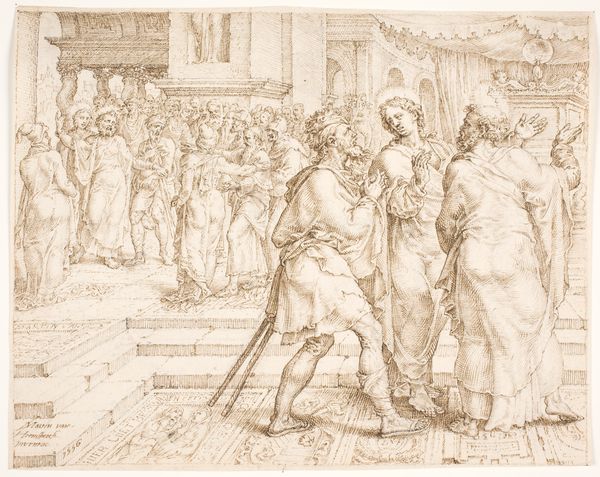
print, etching, engraving
#
baroque
# print
#
etching
#
charcoal drawing
#
figuration
#
history-painting
#
engraving
Copyright: Public domain
Curator: I am immediately drawn to the vulnerable posture of the woman kneeling in the center, all rendered in stark black and white. What is it about this moment that Luca Giordano chose to capture? Editor: This etching by Luca Giordano, dating back to 1653, depicts "Christ and the Adulteress." The composition is quite interesting for the era in which it was created, and what is truly intriguing is how it encapsulates power dynamics of gender and judgment so sharply. Curator: There’s an almost cinematic quality to the staging, right? The crowd gathered, some seemingly sympathetic, others filled with righteous anger, the architectural backdrop lending an air of importance… And she is so utterly alone amidst this moral battleground. Editor: Absolutely, her vulnerability becomes a lens through which we examine the hypocrisy of the accusers. It really invites questions about who has the power to judge, and by what authority. It's a classic theme, but one that resonates deeply across centuries. And the story itself opens up discussions on social justice, particularly considering intersectional elements of gender and class. Curator: Speaking of hypocrisy, have you noticed the texture of their garments versus hers? All the men's robes seem heavy and complex while hers is light, as if she had nothing to hide. Almost as if that somehow amplifies their righteousness while condemning hers. Editor: An astute observation. Giordano really uses those contrasts to amplify the narrative tension, and in a way, comments on the performative nature of piety. This reminds me of several feminist discussions and theories, that women have always been seen in contrast to their society, whether it has been throughout clothing or general representation in different social situations. It makes one think: where does her role in this narrative truly begin, and theirs? Curator: The lack of color really underscores the stark contrast and ethical conflicts in this scenario. If he were painting instead of engraving, I think the piece would lose its emotional bite, because its raw texture lends itself beautifully to conveying that contrast. Editor: Indeed. So many textures coexisting. It really does invite some reflection, not only regarding this image but the context within which we examine religious scriptures that seem to promote violence against those that transgress in some form or another. Curator: I concur, its message on morality and grace is remarkably pertinent today. I’m struck again by how enduring such pieces from 1653 can be. Editor: Timeless themes, etched in lines and shades of grey, reminding us to constantly re-evaluate the scales of judgment we hold in our own hands.
Comments
No comments
Be the first to comment and join the conversation on the ultimate creative platform.
